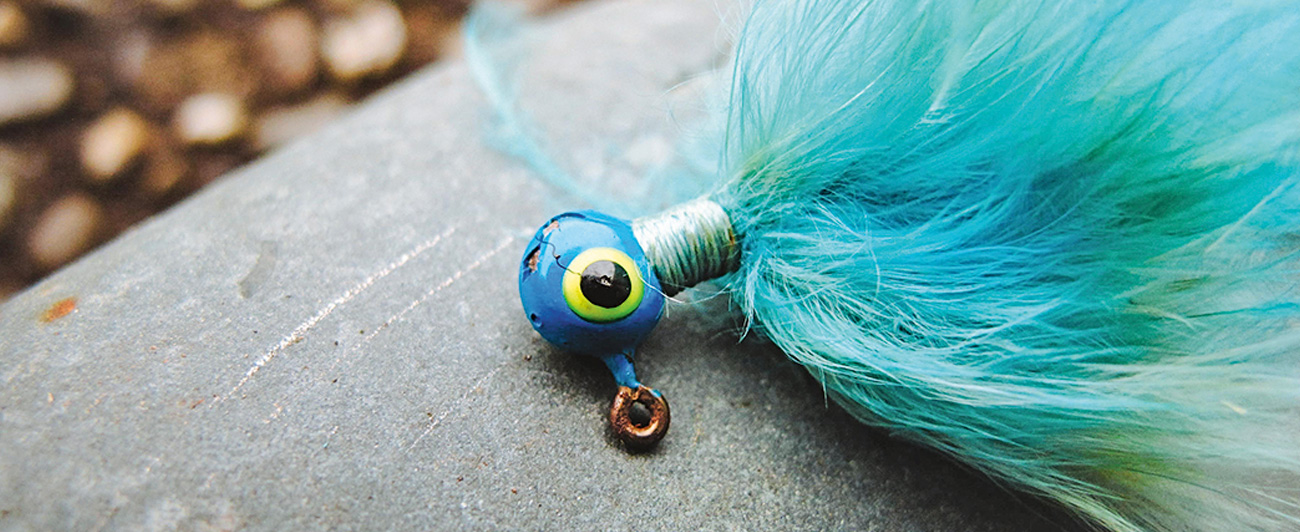Open Water
Concentric Circles
Grandpa sent me out into the yard in search of a stick, “about yay big,” as he held his index fingers four inches apart. He carved off the bark, smoothed the surface, and pushed a sewing pin into the tip of the stick. He dipped the pin end into blue nail varnish and randomly dotted each of my tiny fingernails. He wiped the pin clean and dipped the tool into the pink polish. In complete silence and with laser focus, he placed even smaller dots over the previous blue ones in perfect concentric circles. After each finger was dotted with the appropriate likeness of a brook trout, he broke the silence with his usual pragmatic directive. “Now, sit still, young lady.”
My young mind never questioned Grandpa’s magic fingernail-painting tricks. He simply knew everything about anything. It wasn’t until 20 years later that I discovered the origin of the stick-and-pin technique.
I never got to fish with Robert Hassenauer, but I knew he was a talented flyfisherman. On one of my chicken noodle soup deliveries to his nursing home, I found Grandpa sitting in a chair, staring blankly out the window. His right hand was balled into a fist in front of his heart. His left hand drew circles next to his right hand. I set the soup down on the table and asked him how he was feeling.
“Don’t bother me, Sandy. Can’t you see I’m fishing?”
Any idiot could see he had a fish on, so I ate my soup quietly next to him. Sandy is my mother.
On another visit in spring, Grandpa tried to escape. Sirens sounded, lights flashed, and attendants ran to pry his grip off of the emergency exit door. He had lost the language required to properly reprimand his captors, but as he was being dragged away, you could see his thoughts. “Let go of me, idiots! I’m trying to find the goddamn lake!”
Grandpa needed a shave, though I’m sure he didn’t let his nurse anywhere near him with a blade that morning. His white T-shirt was looking more yellow after what was probably an argument over the squash at lunch and his favorite slippers had seen better days. But his disheveled appearance and lack of diction didn’t blind me from the simple fact that Grandpa would not be taking any shit that day. He needed to find the goddamn lake.
It’s never easy watching someone you love forget who you are. It’s even harder to watch that person forget who they are. Just as he reached his 70s, my grandpa, an equally skilled photographer as he was angler, threw his Nikons into the garbage, an early indication that Alzheimer’s disease had started to eat away at his sense of self. Sometimes I wasn’t able to sit with him in the nursing home. It was too hard to watch, too painful. On these days—his bad ones—I would sit in the lobby and cry, wishing we could both just go home so he could paint my fingernails again.
I didn’t go to his funeral. I prefer an Irish goodbye—quick, emotionless—slipping away without notice or tears. Then last summer, I got a text from my cousin Matt, a spin-casting bass fisherman: “Hey! Hope you’re doing well. I just found a bunch of Grandpa’s old flies. Do you want ’em? Send me your address.”
Five days later, a package showed up on my doorstep with two massive fly boxes. They held upward of 100 minnow-esque flies, all hand-tied by Grandpa. I wiped away tears and snot as I carefully sorted through them. My Irish goodbye had backfired and I sat there sobbing into the boxes.
Grandpa’s flies came in every color of the fluorescent rainbow—small tufts of feathers tied to a lead bead. And on each lead head was painted a neon green iris with a black pupil in perfect concentric circles.
It’s never easy watching someone you love forget who you are. It’s even harder to watch that person forget who they are.
This article was originally published in Volume Nine, Issue Three of The Flyfish Journal.
